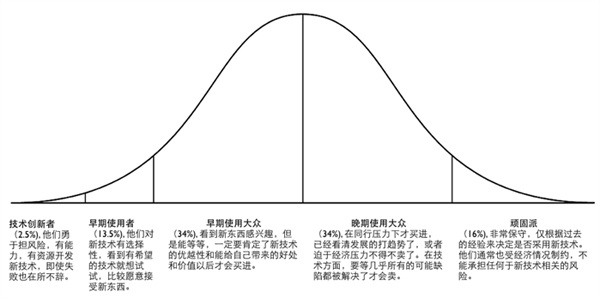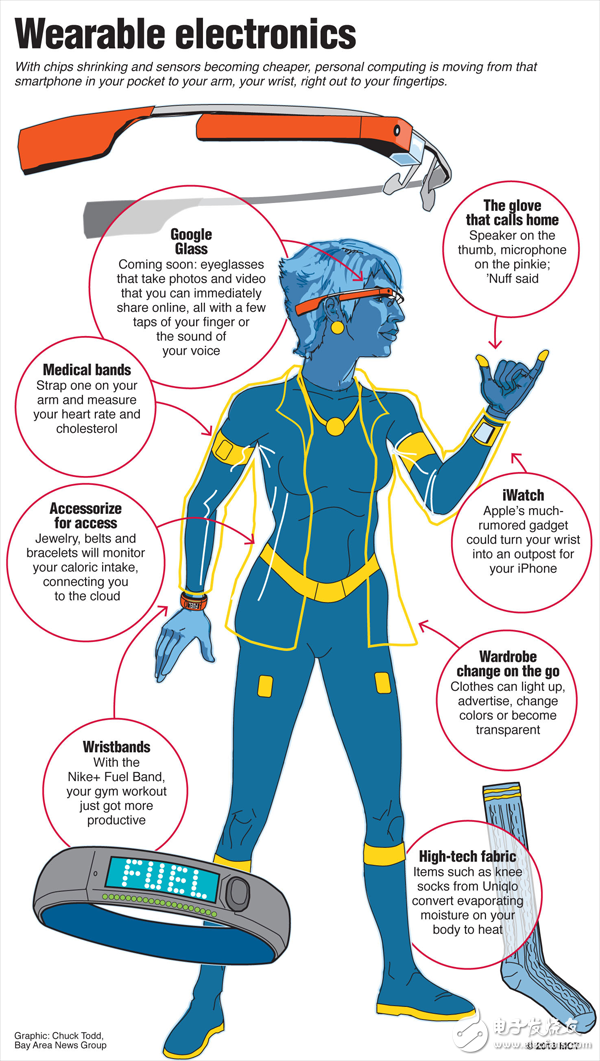The just-concluded CES 2014 has become a launch conference for wearable products. The major companies have collectively attacked and released their own wearable products. Because these products are similar, and there are not many new ideas, plus the investment community and media. The constant enthusiasm in the world, so some people say that wearable technology is hot in the bubble, is this really the case? Is the wearable device market really a big bubble?
Innovative diffusion S curve
Let us look back at an innovation diffusion theory, the "innovation diffusion theory" proposed by the American scholar Egregers. Everett Rogers believes that innovation is: “A concept, time or thing that is considered novel by an individual or other adopting unit.â€
He believes that an innovative product needs to go through five phases: the understanding phase, the interest phase, the evaluation phase, the experimental phase, and the adoption phase. The propagation process of innovation diffusion can be described by an “S†curve. In the early days of proliferation, there were few adopters and the progress rate was very slow. When the number of adopters expanded to 10%~25% of residents, the progress suddenly increased, and the curve rose rapidly and maintained this trend, the so-called “takeoff periodâ€. "; near the saturation point, progress will slow down again. The whole process is similar to an "S" shaped curve. In the process of innovation diffusion, early adopters made the necessary preparations for the subsequent takeoff. This seemingly “small-powered†group can play a big role in interpersonal communication and persuade others to accept innovation. In Rogers' view, early adopters are the ones who are willing to take the lead in accepting and using innovative things and are willing to take risks. These people not only have strong endurance to the initial deficiencies of the innovation, but also can “lobby†the opinions and leaders of the groups in which they are located, so that they can accept and adopt innovative products. After that, innovation spread quickly through opinion leaders. In this way, innovation is not far from the advent of its “take-off periodâ€.

Combined with this curve, it can be seen that the early stages of an innovative product are important and require more people to "early adopt". If early adopters can reach about 25%, they will be able to usher in a major outbreak of this product.
How to make more people come to taste? Obviously, the diversity of products is very important, requiring more companies to intervene and launching a variety of products in order to educate users on the one hand, and to accumulate user groups on the other hand, to prepare for quantitative change to qualitative change.
For wearable devices, it’s early in the development process. It’s a good thing for many companies to participate and contribute to the diversity of the wearable device ecosystem. In fact, in addition to smart watches, wearable devices have Spread to glasses, T-shirts, belts, insoles, wigs, underwear, rings and many other areas, but also in the design of the product also need to address power consumption, appearance, applications and business models, application innovation, etc. These challenges with the advancement of technology And the variety of products can certainly be solved.
Is wearable a trend or a short-lived fever?
To judge whether wearables are a mainstream trend in the future, they have to look back. Over the past decade, the entire industry has focused on PCs to complete the layout of electronic products, such as PC-based games, security, entertainment, office, etc. In the next decade, the entire industry will focus on cloud computing and use its vast computing power to solve problems that PCs cannot solve, such as personal health care, smart home, consumer interest judgment, epidemic warning, etc. To achieve this, you must have an end device that can get the data source, and the wearable device is the choice.
Some people think that mobile phones are also a good choice, yes, but the future role of mobile phones should be relay devices between these sensing devices and the cloud, we need simpler and lower power devices to complete data collection. Therefore, wearable is not a short-lived fever, it is a future development trend.

Bitmain is the world's leading digital currency mining machine manufacturer. Its brand ANTMINER has maintained a long-term technological and market dominance in the industry, with customers covering more than 100 countries and regions. The company has subsidiaries in China, the United States, Singapore, Malaysia, Kazakhstan and other places.
Bitmain has a unique computing power efficiency ratio technology to provide the global blockchain network with outstanding computing power infrastructure and solutions. Since its establishment in 2013, ANTMINER BTC mining machine single computing power has increased by three orders of magnitude, while computing power efficiency ratio has decreased by two orders of magnitude. Bitmain's vision is to make the digital world a better place for mankind.
Bitmain Antminer:Bitmain Antminer KA3 (166Th),Bitmain Antminer L7 (9.5Gh),Bitmain Antminer Z15,Bitmain Antminer D7 (1286Gh),
Bitmain Antminer S19 XP (140Th),Bitmain Antminer E9 (2.4Gh),Bitmain Antminer Z11,Bitmain Antminer S3,Bitmain Antminer L3+ (504Mh)
Bitmain Antminer,S19 Pro Hyd 198T,antminer bitmain,antin s19j,antminer miner
Shenzhen YLHM Technology Co., Ltd. , https://www.nbapgelectrical.com